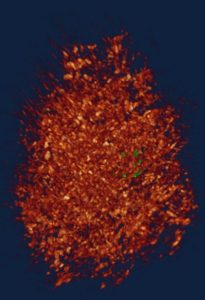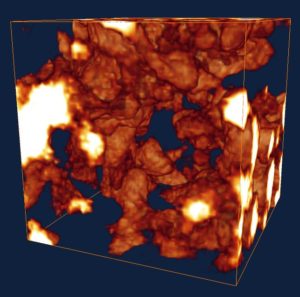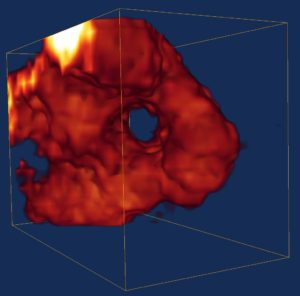Our Research
We began by asking a question.
Stars and planets, including our own, are made of cosmic dust. A major portion of cosmic dust floating in interplanetary space is from comets, surviving icy bodies or planetesimals that preserve primitive materials from the early solar system. Primitive cosmic dust particles are fragile, porous aggregates of mostly submicron and nanoscale grains, including organic materials and minerals, and each grain may have its own identity and history. The structural delicacy of cosmic dust inspired us to think how we could peer into porous aggregates nondestructively and see their entire structure in 3-D nanoscale detail. Through subsequent development we got an answer (see movie below). Phase contrast X-ray nanotomography has, for the first time, enabled us to unlock the structure of intact dust particles in unprecedented 3D nanoscale detail (see images below). For more details, please refer to Hu & Winarski 2016.

An entire cosmic dust particle

A close-up of an inner region of the particle

A close-up of a single sub-micron hollow grain.
Movie showing the 3D structure of a whole comic dust particle. Hu & Winarski 2016.
Why it matters.
Primitive fine-grained cosmic dust particles are the building blocks of planets, and they are porous, ultrafine-grained aggregates. Noninvasively unlocking their structure in 3-D nanoscale detail is essential to understanding the fundamental processes by which cosmic dust and planets formed. Phase contrast X-ray nanotomography offers a new eye in astronomy and astrophysics or the new ability to uncover dust and ice aggregation in the protoplanetary disk in unprecedented 3-D detail. Our initial findings have already yielded important new insight into the properties and formation of dust and ice aggregates.